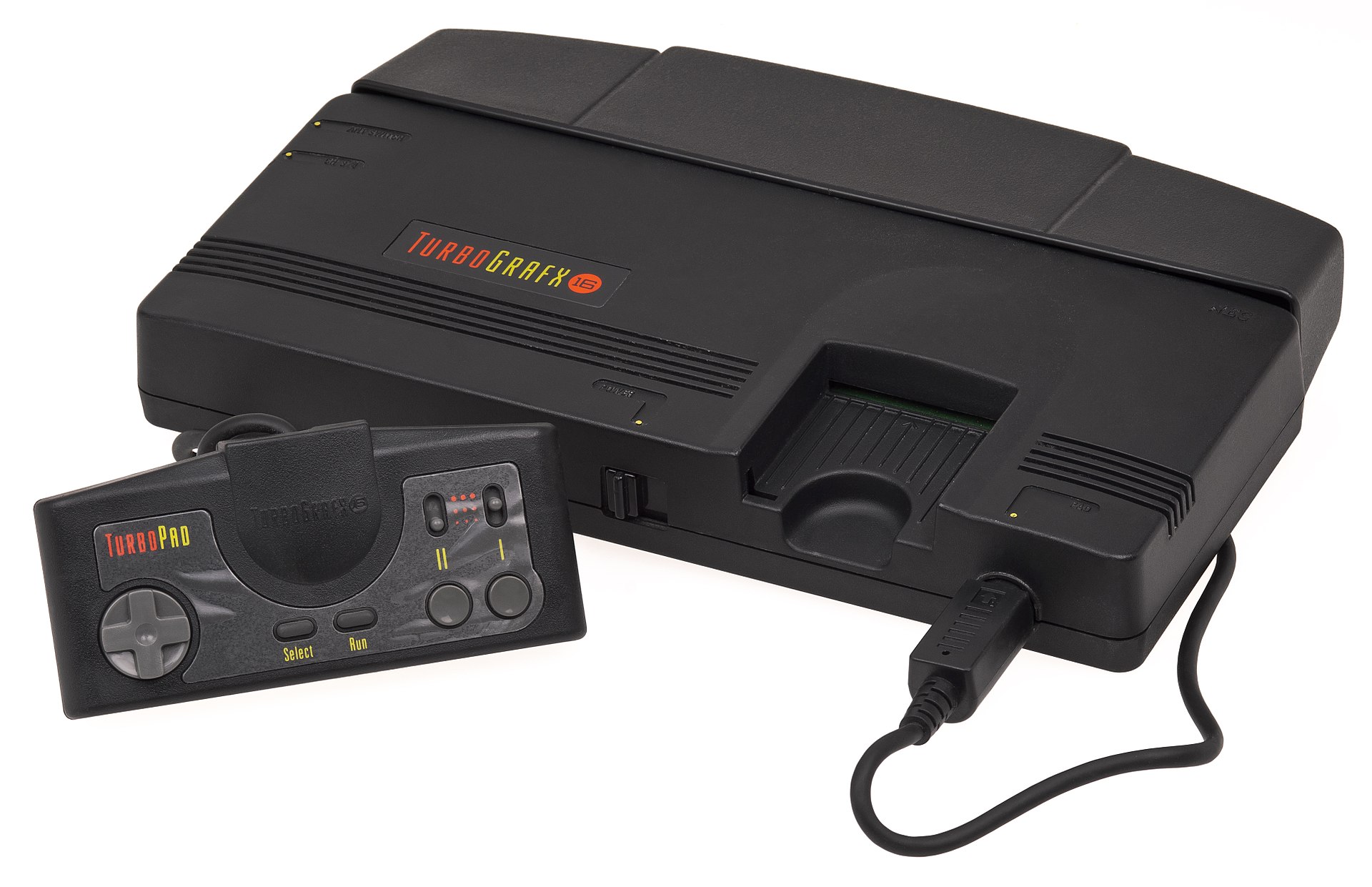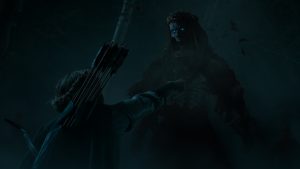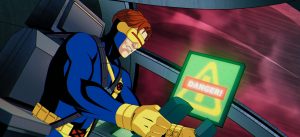
Quality and success do not always go hand in hand. Sometimes a fantastic movie will bomb at the box office. Sometimes a great TV series does not get picked up for a second season. Sometimes a beautiful music album will fall under the radar. Just because something is deemed a failure does not mean it wasn’t worth looking at. Such is the story of the PC Engine, otherwise known as the TurboGrafx-16. While it did well in Japan, its attempt to get a share of the North American market crashed and burned.
It wasn’t even the fault of the console’s performance. Sure, the controller was a bit lame, and the system needed better third-party support, but what was there was usually pretty damn good. It was simply overshadowed by the war between Nintendo and Sega. Now it’s looked back on fondly, seen as a treasure trove that did not catch on as much as it should have.
Let’s take a look at the games that truly defined its faded footprint in video game history.
Bikkuriman World (1987)
There were two PC Engine launch titles in Japan and one of them was a mahjong game, so I don’t really have much to say about that one. Instead, there’s Bikkuriman World: the sword-swinging platformer that itself is a high-quality arcade port, but also not really.
See, the game is based on the arcade game Wonder Boy in Monster Land. While that game would be ported to both the Sega Master System and the Famicom, the PC Engine version would reskin and rename it, tying it into Bikkuriman: an adventure series spun out of wafer snack mascots. Same basic gameplay but with redrawn sprites. This is similar to how the initial Wonder Boy got ported as Adventure Island due to weird legal issues.
Bikkuriman World throws some RPG elements into the platformer setup as you stab monsters for gold, level up weapons and armor, and gain magic abilities. The game goes deep into the use of secrets, both in terms of finding items, but also for finding hidden doors. All in all, a pretty basic, but fitting launch title for the system. While this would never come out for the TurboGrafx-16, that console would get the next Wonder Boy game, Monster Lair.
R-Type (1987)
The shoot ‘em up genre was the TurboGrafx-16’s bread and butter. Those games were to this console what fighting games were to the Neo-Geo, what games with “Super” in the title were to the SNES, and what buyer’s remorse was for the Wii-U. In fact, roughly a sixth of the games released for the console were shooters. With over 100 of these buggers out there, it only makes sense to talk about the one that not only came out first but is also one of the most well-remembered.
Irem’s R-Type is a horizontal space shooter that wears its HR Giger inspiration on its sleeve. As you fire at nightmarish body horror aliens, your ship receives assistance from an invincible “Force” device that attaches to the front or back of the ship and allows for different applications. Mix it with a handful of crazy laser and missile upgrades and you would be unstoppable if not for the game’s unforgiving difficulty. But hey, that’s part of the charm.
Something notable about this game is that the initial PC Engine version had to be released in two parts over time, but the TurboGrafx-16 was the total package. I guess patience has its advantages.
Keith Courage In Alpha Zones (1988)
This is probably the weakest game on the list. Keith Courage in Alpha Zones is split into two different types of platformers, continually bouncing back and forth. Either you’re playing as Keith, fighting enemies and jumping on platforms with janky controls as you buy powerups and visit NPCs, or you’re piloting a stout mech underground and battling absurd enemies. Overall, it’s an incredibly mundane release.
So why is this on the list of games that defined the console? For some reason, NEC decided that Keith Courage in Alpha Zones would be the pack-in game for the TurboGrafx-16. Oof. Yeah, this was not going to inspire immediate faith like Super Mario Bros., Tetris, or even Alter Beast did. Even funnier was how it was a localization of a Japanese game based on the cutesy anime Mashin Hero Wataru and kept the same colorful graphics, all while trying to market Keith Courage as this lantern-jaw comic book hero whose villains are literally called B.A.D. (Beastly Alien Dudes). The lack of any kind of follow-up to Keith’s adventures is telling.
Legendary Axe (1988)
And now we have what should have been the pack-in game for the TurboGrafx-16. After a maiden has been kidnapped by a barbarian cult, a loincloth-wearing badass named Gogan goes on a quest to chop up evil with his magic axe. It’s the “magic” part of the axe that really gives this game its unique flavor, as you aren’t just flailing the weapon at everyone like you would in most hack ‘n’ slash games. No, the axe charges up so that you have to choose your spots wisely and fight with a bit of strategy. At the same time, you can uncover upgrades to your weapon.
It’s a great early release for the system that has its own identity and style, garnering huge acclaim when it hit the scene. It would get its own sequel shortly after, though Legendary Axe II is more of a sequel in name only. The gameplay, developer, story, graphics, aesthetic, and so on are all different. Hell, you start the game with a sword. But there IS an axe in the game, so it has that going for it.
Alien Crush (1988)
Making a pinball game in video game form was an interesting and rather harrowing concept in the early days. You had to nail down those realistic physics when the technology is still young and simple, plus there’s the repetitive nature of the game. If you get too realistic, the whole thing will become boring and static. Luckily, Compile was able to make an entertaining pinball game that felt faithful on the physics side but emphasized personality and concepts that could not physically work in a real-life pinball machine.
Alien Crush has you playing a machine that is so blatantly based on the Alien movies that they were just begging to receive a C&D letter. Mainly taking place on two screens, there is this pulsating, organic feel to it all. It’s as if the pinball machine is a living creature that you’re at war against. Throw in some bonus rounds, and you have some strong replay value and a classic TurboGrafx-16 title. Compile would keep the creepy pinball simulations going with Devil’s Crush shortly after.
Bonk’s Adventure (1989)
We still had a good year or so before Sonic the Hedgehog was a thing, so despite being pretty ineffectual in the long run, Bonk was the first console mascot to make a real go at Mario’s throne. Initially created as a comic character meant to promote the PC Engine, “PC Genjin” gained enough steam that they decided to give him his own platformer. With the gimmick of being a caveman with a comically large skull, Bonk would headbutt his way through a colorful and expressive cartoon world, all while being driven into a murderous frenzy upon eating meat.
He and his game certainly had more going for them than Keith Courage ever did. Bonk was front and center in the marketing for the TurboGrafx-16, showing the smarmy “I’m better than Mario, and you know it!” bad boy personality that Sonic would soon exhibit. Bonk would get two sequels on the console and a spinoff, but as the TurboGrafx-16 soon went the way of the dinosaur (see what I did there?), it didn’t take too long for the first game to get ported onto the NES.
Interestingly enough, while he’s called Bonk in the US, they chose to call him “PC Kid” instead in Europe. I wonder why. Hold on, let me look up what “Bonk” means in British English. …Oh. Yes, that is definitely not PC, kid.
Ys: Book I & II (1989)
When gaming made the leap to CDs, developers really needed games that showed why that technology was the way of the future. With the Sega CD, the emphasis was on full-motion video. It was a fun novelty initially, but grainy video clips got old. Alfa System understood the assignment better than anyone by taking the first two Ys RPG games and upgrading them in a way that felt mind-blowing and still holds up. Already solid gameplay is now met with a banger of a high-quality soundtrack, spoken dialogue, and some nice anime cutscenes.
The games have you playing as Adol: an adventurer out to gather mystical books to resurrect the lost land of Ys and also cleanse the lands of evil. The gimmick is that instead of pressing a button to attack, you have to run into your enemies, and your success is based on various factors. Otherwise, it’s a lot of searching, grinding, fetch quests, and so on, with enough good pacing and storytelling to keep you engaged. It is exactly what the TurboGrafx-CD needed to show off, and it’s fitting that this would be the pack-in game for the TurboDuo.
Splatterhouse (1988)
Splatterhouse is about Rick Taylor: a hockey mask-wearing hulk of a man who is afraid of no ghouls (not counting Jason Voorhees’ lawyers). Wearing the Terror Mask (please don’t sue!), he barges into a haunted mansion to save his kidnapped girlfriend. Not only was it a near-perfect port of an arcade hit, but it was the kind of title that would catch attention and identify itself as something that Nintendo would never touch…unless it was reimagined as a cute comedy game for the Famicom.
It’s a sidescroller beat ‘em up with an emphasis on gore and nightmarish visuals. There is a lot of variety in the horrors you come across, but they’re all a blast to demolish as you go on the offensive. Picking up a big stick and batting zombies into the walls behind you never gets old. The sequels would end up on the Sega Genesis, but outside of the arcade, if you wanted to play the first chapter back then in the US, it meant checking out the TurboGrafx-16.
Ninja Spirit (1988)
Playing Ninja Spirit is like trying a better version of Legend of Kage and being 15 minutes deep into a round of Vampire Survivors. Even all the non-stop ninja attacks from every side barely matter. Once you get a couple of shadow clones copying your every move and some weapon upgrades, you can turn your hero into his own katana-wielding equivalent of a bullet hell. That’s not to say the game doesn’t get hard, but there’s a definite satisfaction that comes with filling the screen with shurikens, smoke bombs, and kusarigamas to kill everything that moves.
This is one of those games that shows how close the Turbografx-16 could get to what the arcades were capable of at the time. Sure, a few graphical bits got cut from this port (some cutscene animations and background stuff, mainly), but everything that matters is there, including the tight gameplay. Not only that, but as this console release isn’t a relentless quarter-muncher, the game lets you choose between one-hit kills like in the arcade or having a health meter. Still, those infinite continues will probably come in handy.
Bomberman (1990)
Bomberman is one of those series that feels timeless. Even in the lamer entries, like the one for Nintendo 64, the game has that classic, addictive feel that always reels you in for more once you’re reminded it exists. Bomberman was released for the PC Engine/TurboGrafx-16 in the early 90s and it really gave the series a shot in the arm. But why is this version so important if it was just a rerelease of something that had been around since 1983? Simple: this version of Bomberman had multiplayer.
Yes, while the single-player campaign can be gold, the real soul of the series comes from getting some friends together and trying to bomb each other into oblivion. Thanks to the TurboTap, you could have up to five players go at it, though that means having five TurboGrafx-16 controllers and there probably weren’t too many people with that kind of hardware on hand. Regardless, it led to a better-looking follow-up with Bomberman ’93, and a Japan-only Bomberman ’94.
Gate of Thunder (1992)
The TurboGrafx-16 had already gone ham on the space shooter genre, and in 1992, they were leveling up with CD technology. So, what happens when you toss a quality shooter setup together with advanced hardware? Your face melts off from the console’s first CD shoot ‘em up, Gate of Thunder. Thankfully, this was one of the several pack-in games for the TurboDuo, really showing how much value came with NEC’s last-minute desperation.
As a horizontal space shooter, there isn’t too much to say about the gameplay, other than it gets everything right and does a great job ramping up the difficulty (especially how much smarter bosses get when you increase the difficulty option). It’s the technological shot in the arm that really lets this baby fly, as the graphics – especially the parallax scrolling backgrounds – are a thing of beauty. And that soundtrack! Oh man, the metal music is exactly the kind of thing that will get you into the zone.
The danger zone, if you will.
Air Zonk (1992)
Deep into the console’s lifespan was a game that felt off-the-wall and unpredictable, but, at the same time, such an obvious culmination of ideas.
As mentioned, the Turbografx-16 was completely oversaturated with shoot ’em-ups. While there were fantastic offerings like Soldier Blade and Blazing Lazers, there just wasn’t enough to really make them stick out. Not enough for me to wax poetic for two paragraphs each, at least. These games needed to be more unorthodox to get noticed, like the anime witch adventure Cotton: Fantastic Night Dreams. Red Company decided to mix the futuristic space shooters with the universe of Bonk’s Adventure and the final product was a beaut.
Air Zonk is a shoot ’em-up where you play as Bonk’s cyborg descendant in the distant future. Same art style and febrile humor, but now you’re flying around shooting at enemies non-stop. There’s a cool ally system where you assign an assist character with cartoony attacks, and you can even absorb their abilities as your own. The game is brimming with personality, making you wish it had a longer-lasting legacy. They did come out with a CD-based sequel called Super Air Zonk: Rockabilly Paradise in the console’s final days, but it’s a step down in quality, outside of the kicking rockabilly soundtrack.
Castlevania: Rondo of Blood (1993)
By 1993, games were still being released for the PC Engine, but the TurboGrafx-16 had called it a day. Many titles would remain Japanese exclusives due to this, and none showed gamers what they were missing after the fact more than Rondo of Blood. This Castlevania title took the basics from the games that came before it, and created something special and new. Playing as Richter Belmont, you whip your way through Dracula’s grounds with secret paths, newly added Crash attacks, and a very different unlockable hero in Maria Renard.
It’s a beautiful game with awesome visuals and cutscenes thrown in, really showing what a 2D Castlevania could become. They would try to port a lesser version of it onto the SNES as Dracula X, but it just didn’t measure up. The game’s true legacy is for being directly followed by the beloved classic Castlevania: Symphony of the Night. As time stretched forward and retro gaming became more popular in video game culture, Rondo of Blood has made people realize just how overlooked NEC’s console truly was.
The post The Games That Defined The TurboGrafx-16 appeared first on Den of Geek.






